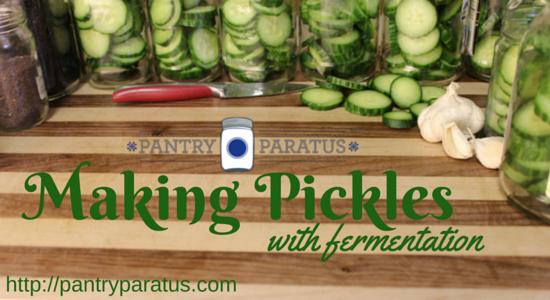
Pickles are personal. Since pickled (or fermented) veggies are so easy to make at home, I can get creative and make them just as I like them! In fact, if you want to get the great probiotic benefits of a true fermented vegetable and avoid unnecessary food coloring and preservatives, you have no choice but to make them at home. Cutting out Yellow #5 and #6 is what finally led me to make my own cucumber dills, and if I occasionally eat a store-bought one at a picnic, I’m taken aback at how slimy and flavorless they seem to me now.
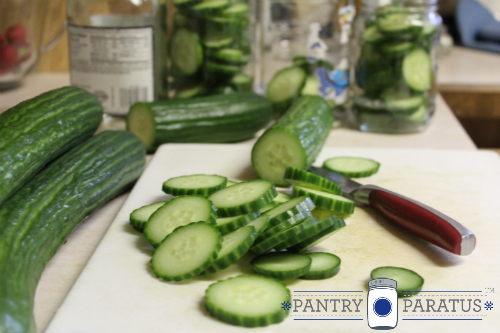
Making Pickles with Fermentation
Since I do use small batch jars, I will give only rough estimates on spices per jar. Of course, since my recycled jars are irregular in size from one another, this is only a rough estimate. Here’s the beauty: you need to check on your pickles while they are fermenting. If you taste one a week later and it tastes bland, it is never to late to add dill, mustard seed, peppercorns, garlic, or onion. If they are too salty, drain off some of the brine and add plain water. They are so fixable! If you have a jar that came out amazingly well, use that jar’s brine as a starter for the next jar and keep the good thing going.
If you have fuzzy pickles: it means that your pickles were not covered completely in the brine and oxygen got into them. It might not actually be mold as you first assume; there is a kind of yeast that creates this weird film on top. Scrape it off, wash off your weight (if you use one to hold the food below the liquid) and the lid. You’re good to go. If you do have small spots of mold (it can be various colors—shocking at first), you will want to get a deep serving spoon or ladle and scoop out the section with the offense. I recommend adding a little more salt (it’s a mold inhibitor) and definitely more water to ensure that all of the vegetables are completely covered. I give it a taste test, too. Trust your gut. It if stinks, don’t taste it—pitch it. Sometimes I just really don’t like the flavor of that particular jar after removing the mold. I find that jars that have had mold sometimes result in a slimy product. In such cases, I don’t keep the jar at all. If I remove the mold but the pickles taste great, I keep them going.
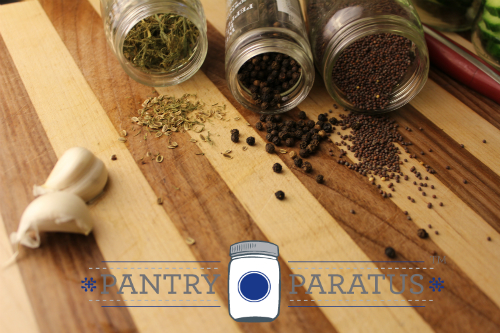
You have some options:
1) Use a tannin to retain crispness. You can use 1/2 tsp of black tea per jar, or leaves from a cherry or oak tree. I have always used cherry leaves from my sour cherry tree—but we moved, so now I’m resorting to black tea. I can’t taste it, though, so it is all good. If you choose not to use a tannin, you will not want to let it ferment as long before moving to cold storage.
2) Your choice of flavors. Spice, sweet, or sour; you can play with using things like onions or mustard and in what quantities. My recipe below tends to be tangy-sour. You can use a tried-and-true prepackaged spice blend from Pantry Paratus and call it a day.
3) Fermenting weights are ceramic discs that hold the vegetables below the brine and will give you great odds against mold. However, they aren’t necessary. I’ve rigged things up before—small measuring cups, plates (when using the bucket method), and I recently discovered that my strawberry huller worked beautifully in a small jar to help hold down the pickles!
4) Type of lid: you can use cheesecloth or actually use a lid. I like a real lid because if I have too much evaporation between checks, I run the risk of food rising above the brine, and it keeps everything clean. I prefer to use Tattler lids (because they’re BPA free) on Mason jars, but on my recycled jars, I frequently just use the lids that came on them, with something to help keep the food pushed down (a weight) so that the food isn’t touching the lid at all. With a lid, though, the jar will “burp” up the displaced gases and so checking it does become rather important to release that pressure.
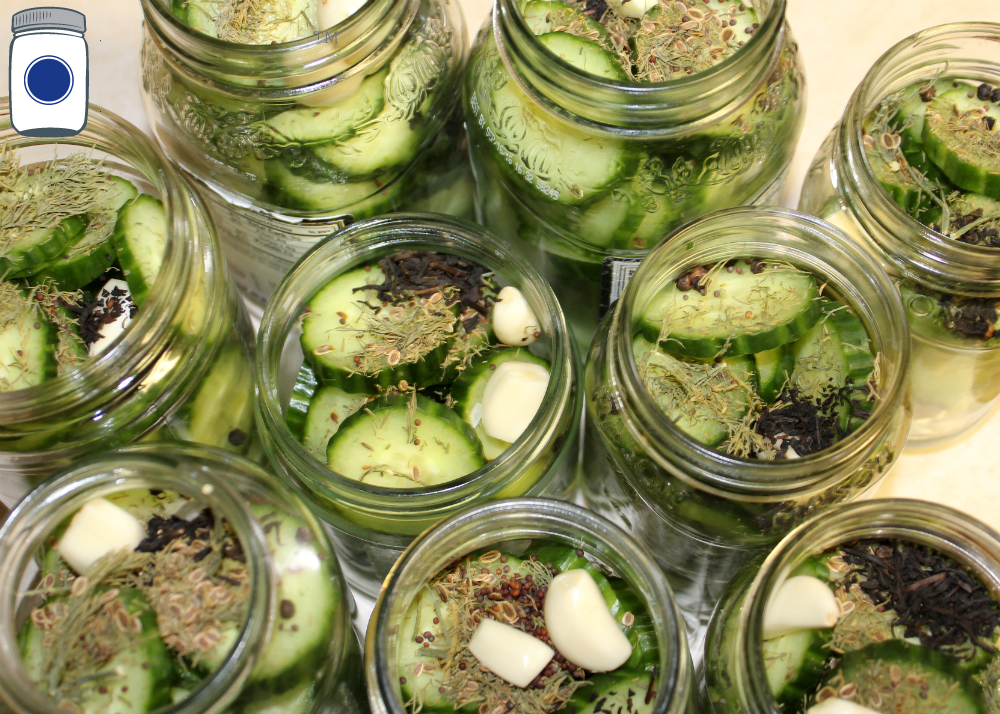
For my pickles, I prefer (per jar):
*8-10 peppercorns (I use black but some people only use white in pickles) *½-1 tsp mustard seed (use less if adding powdered mustard or ground seed) *2 full garlic cloves (use less if mincing it first) *1-2 tsp dill (I dry my own, so my seeds & dill weed are typically mixed together) *Either a Tbs of brine from previous batches or some whey from yogurt or sour cream (as a “starter”) *Sea salt (try specialty flavors for a kick, like Hawaiian black or Himalayan pink) *Filtered water (needs to be filtered—your city water might contain chlorine which will inhibit the fermentation process)
1) Boil filtered water with sea salt: Use 2-3 Tbs per quart of water.
2) While you let the brine cool, put the garlic and leaves (optional) on the bottom, but save the rest of the spices for the top.
3) Slice the cucumbers and layer them in the jar.
4) Add the spices on top—I have a theory it imparts more flavor when you pour the brine over them and they tend to shift to the bottom eventually anyway.
5) When the brine is at room temperature, pour the brine over the spices. You must cover all of the vegetables and spices! If they try to float, use something in the jar as a weight (Even nice, smooth rocks from outside can be boiled and used).
6) Be sure to push the vegetables down to let air pockets escape!
7) Put on a lid or use cheesecloth. Leave jars in a warm place.
8) Check them every day or every-other-day. Taste them after 1 week. When they are to your liking, refrigerate.
If you would like to learn more about fermentation, click here:

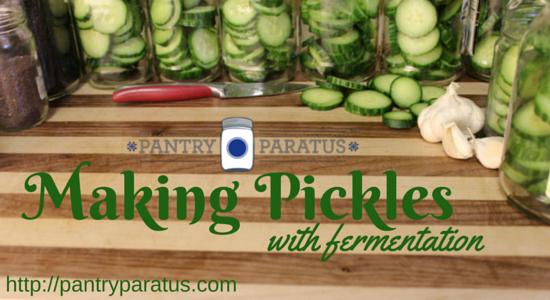
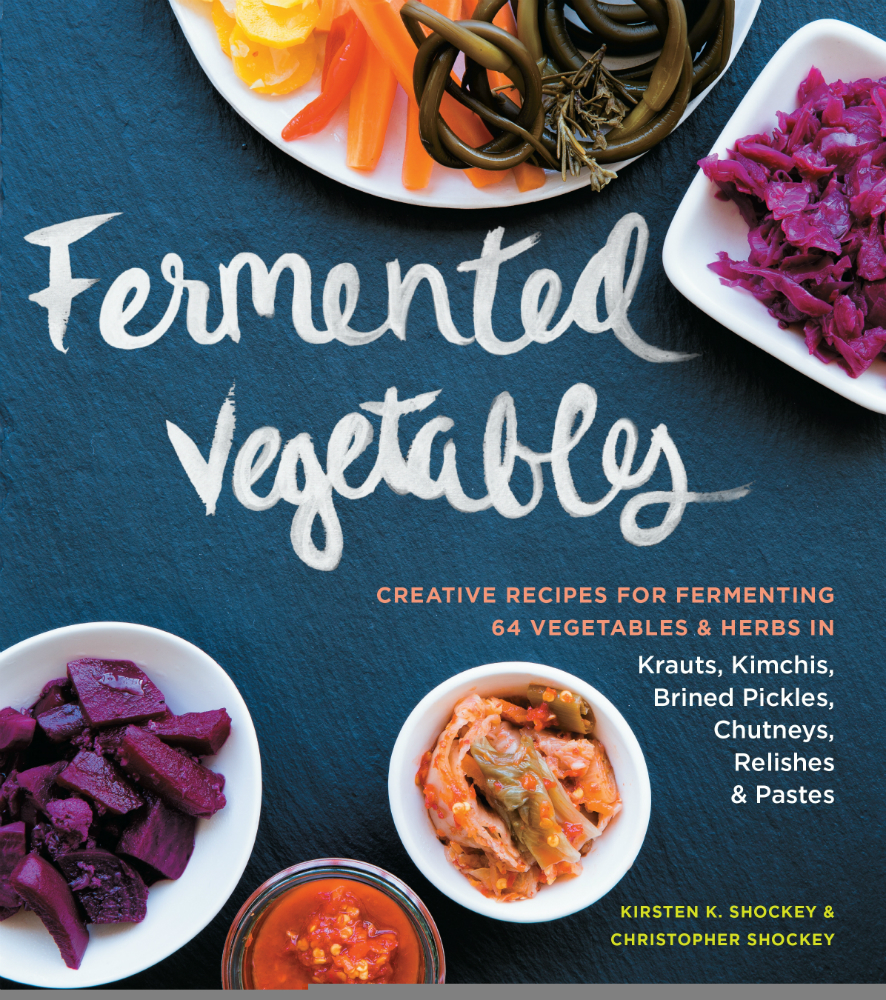
Could this be made in a 5 gallon preserving crock? It’s not one of the fermentation crocks, it has weights and a flat lid. My awesome hubby picked it up for me from a local store but I don’t know how to use it!
Definitely! Keep in mind that large batches ferment at different rates and retain different temperatures. Keep your eye on it. That’s the method I always used to use with sauerkraut. Sandor Katz (an expert of fermentation) doesn’t think the crocks are necessary; he even suggests that a plate can serve as a weight in a bucket. Go for it and let us know how they turn out–remember to check on their progress often.
You are very lucky to have found a crock with the weight. I have various sizes of crocks from a 3 to a 20, but have not found any weights. We fermented pickles in one last year and just used a plate with a jar full of water as a weight and covered with a towel to keep bugs out. It worked great. I would fill it full of water and let it sit for a day to make sure it doesn’t have any cracks that make it leak before I go to the trouble of putting my pickles into it.
Am I correct in assuming that the “whey from yogurt or sour cream” in the liquid that you sometimes find in yogurt before you mix it up? Do I pour that in the brine after it cools or do I add it directly to the jar with the cucumbers before adding the brine.
Also, will this work with whole cucumbers instead of slicing them?